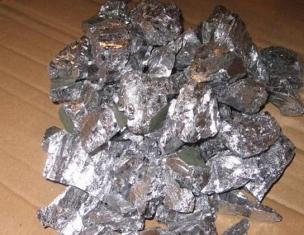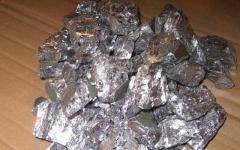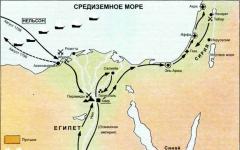Any composite number can be factorized into prime factors. There can be several methods of decomposition. Either method produces the same result.
How to factor a number into prime factors in the most convenient way? Let's look at how best to do this using specific examples.
Examples. 1) Factor the number 1400 into prime factors.
1400 is divisible by 2. 2 is a prime number; there is no need to factor it. We get 700. Divide it by 2. We get 350. We also divide 350 by 2. The resulting number 175 can be divided by 5. The result is 35 - we divide it by 5 again. Total is 7. It can only be divided by 7. We get 1, division over.
The same number can be factorized differently:
 It is convenient to divide 1400 by 10. 10 is not a prime number, so it needs to be factored into prime factors: 10=2∙5. The result is 140. We divide it again by 10=2∙5. We get 14. If 14 is divided by 14, then it should also be decomposed into a product of prime factors: 14=2∙7.
It is convenient to divide 1400 by 10. 10 is not a prime number, so it needs to be factored into prime factors: 10=2∙5. The result is 140. We divide it again by 10=2∙5. We get 14. If 14 is divided by 14, then it should also be decomposed into a product of prime factors: 14=2∙7.
Thus, we again came to the same decomposition as in the first case, but faster.
Conclusion: when decomposing a number, it is not necessary to divide it only into prime factors. We divide by whatever is more convenient, for example, by 10. You just need to remember to decompose the compound divisors into simple factors.
2) Factor the number 1620 into prime factors.

The most convenient way to divide the number 1620 is by 10. Since 10 is not a prime number, we represent it as a product of prime factors: 10=2∙5. We got 162. It is convenient to divide it by 2. The result is 81. The number 81 can be divided by 3, but by 9 it is more convenient. Since 9 is not a prime number, we expand it as 9=3∙3. We get 9. We also divide it by 9 and expand it into the product of prime factors.
Factoring a large number is not an easy task. Most people have trouble figuring out four or five digit numbers. To make the process easier, write the number above the two columns.
- Let's factorize the number 6552.
Divide the given number by the smallest prime divisor (other than 1) that divides the given number without leaving a remainder. Write this divisor in the left column, and write the result of the division in the right column. As noted above, even numbers are easy to factor because their smallest prime factor will always be 2 (odd numbers have different smallest prime factors).
- In our example, 6552 is an even number, so 2 is its smallest prime factor. 6552 ÷ 2 = 3276. Write 2 in the left column and 3276 in the right column.
Next, divide the number in the right column by the smallest prime factor (other than 1) that divides the number without a remainder. Write this divisor in the left column, and in the right column write the result of the division (continue this process until there are no 1s left in the right column).
- In our example: 3276 ÷ 2 = 1638. Write 2 in the left column, and 1638 in the right column. Next: 1638 ÷ 2 = 819. Write 2 in the left column, and 819 in the right column.
You got an odd number; For such numbers, finding the smallest prime divisor is more difficult. If you get an odd number, try dividing it by the smallest prime odd numbers: 3, 5, 7, 11.
- In our example, you received an odd number 819. Divide it by 3: 819 ÷ 3 = 273. Write 3 in the left column and 273 in the right column.
- When looking for factors, try all the prime numbers up to the square root of the largest factor you find. If no divisor divides the number by an integer, then you most likely have a prime number and can stop calculating.
Continue the process of dividing numbers by prime factors until you are left with a 1 in the right column (if you get a prime number in the right column, divide it by itself to get a 1).
- Let's continue the calculations in our example:
- Divide by 3: 273 ÷ 3 = 91. There is no remainder. Write down 3 in the left column and 91 in the right column.
- Divide by 3. 91 is divisible by 3 with a remainder, so divide by 5. 91 is divisible by 5 with a remainder, so divide by 7: 91 ÷ 7 = 13. No remainder. Write down 7 in the left column and 13 in the right column.
- Divide by 7. 13 is divisible by 7 with a remainder, so divide by 11. 13 is divisible by 11 with a remainder, so divide by 13: 13 ÷ 13 = 1. There is no remainder. Write 13 in the left column and 1 in the right column. Your calculations are complete.
The left column shows the prime factors of the original number. In other words, when you multiply all the numbers in the left column, you will get the number written above the columns. If the same factor appears more than once in the list of factors, use exponents to indicate it. In our example, 2 appears 4 times in the list of multipliers; write these factors as 2 4 rather than 2*2*2*2.
- In our example, 6552 = 2 3 × 3 2 × 7 × 13. You factored 6552 into prime factors (the order of the factors in this notation does not matter).
What does factoring mean? How to do this? What can you learn from factoring a number into prime factors? The answers to these questions are illustrated with specific examples.
Definitions:
A number that has exactly two different divisors is called prime.
A number that has more than two divisors is called composite.
To factor a natural number means to represent it as a product of natural numbers.
To factor a natural number into prime factors means to represent it as a product of prime numbers.
Notes:
- In the decomposition of a prime number, one of the factors is equal to one, and the other is equal to the number itself.
- It makes no sense to talk about factoring unity.
- A composite number can be factored into factors, each of which is different from 1.
|
Let's factor the number 150. For example, 150 is 15 times 10. 15 is a composite number. It can be factored into prime factors of 5 and 3. 10 is a composite number. It can be factored into prime factors of 5 and 2. By writing their decompositions into prime factors instead of 15 and 10, we obtained the decomposition of the number 150. |
|
|
|
The number 150 can be factorized in another way. For example, 150 is the product of the numbers 5 and 30. 5 is a prime number. 30 is a composite number. It can be thought of as the product of 10 and 3. 10 is a composite number. It can be factored into prime factors of 5 and 2. We obtained the factorization of 150 into prime factors in a different way. |
|
Note that the first and second expansions are the same. They differ only in the order of the factors. It is customary to write factors in ascending order. |
|
|
Every composite number can be factorized into prime factors in a unique way, up to the order of the factors. |
|
When factoring large numbers into prime factors, use column notation:
 |
The smallest prime number that is divisible by 216 is 2. Divide 216 by 2. We get 108. |
|
The resulting number 108 is divided by 2. Let's do the division. We get 54 as a result. |
|
|
According to the test of divisibility by 2, the number 54 is divisible by 2. After dividing, we get 27. |
|
|
The number 27 ends with the odd digit 7. It Not divisible by 2. The next prime number is 3. Divide 27 by 3. We get 9. Least prime The number that 9 is divisible by is 3. Three is itself a prime number; it is divisible by itself and one. Let's divide 3 by ourselves. In the end we got 1. |
|
- A number is divisible only by those prime numbers that are part of its decomposition.
- A number is divisible only into those composite numbers whose decomposition into prime factors is completely contained within it.
Let's look at examples:
|
4900 is divisible by the prime numbers 2, 5 and 7 (they are included in the expansion of the number 4900), but is not divisible by, for example, 13. |
|
|
11 550 75. This is so because the decomposition of the number 75 is completely contained in the decomposition of the number 11550. The result of division will be the product of factors 2, 7 and 11. 11550 is not divisible by 4 because there is an extra two in the expansion of four. |
Find the quotient of dividing the number a by the number b, if these numbers are decomposed into prime factors as follows: a=2∙2∙2∙3∙3∙3∙5∙5∙19; b=2∙2∙3∙3∙5∙19
|
The decomposition of the number b is completely contained in the decomposition of the number a. |
|
|
The result of dividing a by b is the product of the three numbers remaining in the expansion of a. So the answer is: 30. |
References
- Vilenkin N.Ya., Zhokhov V.I., Chesnokov A.S., Shvartsburd S.I. Mathematics 6. - M.: Mnemosyne, 2012.
- Merzlyak A.G., Polonsky V.V., Yakir M.S. Mathematics 6th grade. - Gymnasium. 2006.
- Depman I.Ya., Vilenkin N.Ya. Behind the pages of a mathematics textbook. - M.: Education, 1989.
- Rurukin A.N., Tchaikovsky I.V. Assignments for the mathematics course for grades 5-6. - M.: ZSh MEPhI, 2011.
- Rurukin A.N., Sochilov S.V., Tchaikovsky K.G. Mathematics 5-6. A manual for 6th grade students at the MEPhI correspondence school. - M.: ZSh MEPhI, 2011.
- Shevrin L.N., Gein A.G., Koryakov I.O., Volkov M.V. Mathematics: Textbook-interlocutor for 5-6 grades of secondary school. - M.: Education, Mathematics Teacher Library, 1989.
- Internet portal Matematika-na.ru ().
- Internet portal Math-portal.ru ().
Homework
- Vilenkin N.Ya., Zhokhov V.I., Chesnokov A.S., Shvartsburd S.I. Mathematics 6. - M.: Mnemosyne, 2012. No. 127, No. 129, No. 141.
- Other tasks: No. 133, No. 144.
What does factoring mean? How to do this? What can you learn from factoring a number into prime factors? The answers to these questions are illustrated with specific examples.
Definitions:
A number that has exactly two different divisors is called prime.
A number that has more than two divisors is called composite.
To factor a natural number means to represent it as a product of natural numbers.
To factor a natural number into prime factors means to represent it as a product of prime numbers.
Notes:
- In the decomposition of a prime number, one of the factors is equal to one, and the other is equal to the number itself.
- It makes no sense to talk about factoring unity.
- A composite number can be factored into factors, each of which is different from 1.
|
Let's factor the number 150. For example, 150 is 15 times 10. 15 is a composite number. It can be factored into prime factors of 5 and 3. 10 is a composite number. It can be factored into prime factors of 5 and 2. By writing their decompositions into prime factors instead of 15 and 10, we obtained the decomposition of the number 150. |
|
|
|
The number 150 can be factorized in another way. For example, 150 is the product of the numbers 5 and 30. 5 is a prime number. 30 is a composite number. It can be thought of as the product of 10 and 3. 10 is a composite number. It can be factored into prime factors of 5 and 2. We obtained the factorization of 150 into prime factors in a different way. |
|
Note that the first and second expansions are the same. They differ only in the order of the factors. It is customary to write factors in ascending order. |
|
|
Every composite number can be factorized into prime factors in a unique way, up to the order of the factors. |
|
When factoring large numbers into prime factors, use column notation:
 |
The smallest prime number that is divisible by 216 is 2. Divide 216 by 2. We get 108. |
|
The resulting number 108 is divided by 2. Let's do the division. We get 54 as a result. |
|
|
According to the test of divisibility by 2, the number 54 is divisible by 2. After dividing, we get 27. |
|
|
The number 27 ends with the odd digit 7. It Not divisible by 2. The next prime number is 3. Divide 27 by 3. We get 9. Least prime The number that 9 is divisible by is 3. Three is itself a prime number; it is divisible by itself and one. Let's divide 3 by ourselves. In the end we got 1. |
|
- A number is divisible only by those prime numbers that are part of its decomposition.
- A number is divisible only into those composite numbers whose decomposition into prime factors is completely contained within it.
Let's look at examples:
|
4900 is divisible by the prime numbers 2, 5 and 7 (they are included in the expansion of the number 4900), but is not divisible by, for example, 13. |
|
|
11 550 75. This is so because the decomposition of the number 75 is completely contained in the decomposition of the number 11550. The result of division will be the product of factors 2, 7 and 11. 11550 is not divisible by 4 because there is an extra two in the expansion of four. |
Find the quotient of dividing the number a by the number b, if these numbers are decomposed into prime factors as follows: a=2∙2∙2∙3∙3∙3∙5∙5∙19; b=2∙2∙3∙3∙5∙19
|
The decomposition of the number b is completely contained in the decomposition of the number a. |
|
|
The result of dividing a by b is the product of the three numbers remaining in the expansion of a. So the answer is: 30. |
References
- Vilenkin N.Ya., Zhokhov V.I., Chesnokov A.S., Shvartsburd S.I. Mathematics 6. - M.: Mnemosyne, 2012.
- Merzlyak A.G., Polonsky V.V., Yakir M.S. Mathematics 6th grade. - Gymnasium. 2006.
- Depman I.Ya., Vilenkin N.Ya. Behind the pages of a mathematics textbook. - M.: Education, 1989.
- Rurukin A.N., Tchaikovsky I.V. Assignments for the mathematics course for grades 5-6. - M.: ZSh MEPhI, 2011.
- Rurukin A.N., Sochilov S.V., Tchaikovsky K.G. Mathematics 5-6. A manual for 6th grade students at the MEPhI correspondence school. - M.: ZSh MEPhI, 2011.
- Shevrin L.N., Gein A.G., Koryakov I.O., Volkov M.V. Mathematics: Textbook-interlocutor for 5-6 grades of secondary school. - M.: Education, Mathematics Teacher Library, 1989.
- Internet portal Matematika-na.ru ().
- Internet portal Math-portal.ru ().
Homework
- Vilenkin N.Ya., Zhokhov V.I., Chesnokov A.S., Shvartsburd S.I. Mathematics 6. - M.: Mnemosyne, 2012. No. 127, No. 129, No. 141.
- Other tasks: No. 133, No. 144.
(except 0 and 1) have at least two divisors: 1 and itself. Numbers that have no other divisors are called simple numbers. Numbers that have other divisors are called composite(or complex) numbers. There are an infinite number of prime numbers. The following are prime numbers not exceeding 200:
2, 3, 5, 7, 11, 13, 17, 19, 23, 29, 31, 37, 41, 43,
47, 53, 59, 61, 67, 71, 73, 79, 83, 89, 97, 101,
103, 107, 109, 113, 127, 131, 137, 139, 149, 151,
157, 163, 167, 173, 179, 181, 191, 193, 197, 199.
Multiplication- one of the four basic arithmetic operations, a binary mathematical operation in which one argument is added as many times as the other. In arithmetic, multiplication is a short form of adding a specified number of identical terms.
For example, the notation 5*3 means “add three fives,” that is, 5+5+5. The result of multiplication is called work, and the numbers to be multiplied are multipliers or factors. The first factor is sometimes called " multiplicand».
Every composite number can be factorized into prime factors. With any method, the same expansion is obtained, if you do not take into account the order in which the factors are written.
Factoring a number (Factorization).
Factorization (factorization)- enumeration of divisors - an algorithm for factorization or testing the primality of a number by completely enumerating all possible potential divisors.
That is, in simple terms, factorization is the name of the process of factoring numbers, expressed in scientific language.
The sequence of actions when factoring into prime factors:
1. Check whether the proposed number is prime.
2. If not, then, guided by the signs of division, we select a divisor from prime numbers, starting with the smallest (2, 3, 5 ...).
3. We repeat this action until the quotient turns out to be a prime number.









